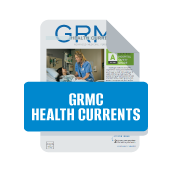
Diabetes 101
3 minutes
Diabetes is so common you probably know someone living with it. In fact, 1 in 10 people has it. Here’s a crash course on diabetes basics, including causes, how it’s diagnosed, and ways to manage and prevent it.
Types of diabetes
There are two main types of diabetes.
Type 1 diabetes. This occurs when your body doesn’t make insulin, a hormone needed to regulate blood sugar. It’s usually diagnosed in children but can be discovered in adults.
Type 1 symptoms include:
- Increased appetite.
- Frequent urination.
- Heavy breathing.
- Vision changes.
If you spot any of those symptoms, make an appointment with your health care provider.
Type 2 diabetes. This is the most common type, where the body doesn’t use insulin properly. It can develop at any age but is more common in adults than in children. Type 2 diabetes symptoms can be hard to spot, so it’s important to know the risk factors:
- Having a family history of type 2 diabetes.
- Being overweight.
- Having prediabetes.
- Being physically inactive.
- Being older than 45.
Gestational diabetes. This can happen in pregnant women who’ve never had diabetes. It usually goes away when the baby is born. It increases your risk of getting type 2 diabetes later down the line.
Prediabetes is when your blood sugar is high but not quite high enough for a diabetes diagnosis yet. It’s even more common than diabetes—1 in 3 adults has it. A prediabetes diagnosis gives you the chance to prevent diabetes with lifestyle changes.
If you have these risk factors, your health care provider will likely give you tests, such as the A1C test, which measures blood sugar levels over time; the fasting blood sugar test; and the glucose tolerance test.
Basics of blood sugar management
Managing blood sugar is crucial for those with all types of diabetes. If you have diabetes, your health care provider will show you how to check your blood sugar with a meter or monitor. Keeping tabs on your blood sugar levels can help you keep them within a healthy range.
These are a few simple steps to help keep your blood sugar on target:
- Don’t skip meals.
- Take medications as directed.
- Avoid or limit alcohol.
- Don’t overeat.
- Replace sweets with fruit.
Reducing your risk
Even if you’re at risk for type 2 diabetes or you’re living with prediabetes, you can take steps to prevent the disease:
- Maintain a healthy body weight.
- Eat a balanced diet, including vegetables, whole grains and fruit.
- Get regular exercise.
Sources: American Diabetes Association; Breakthrough T1D; Centers for Disease Control and Prevention


